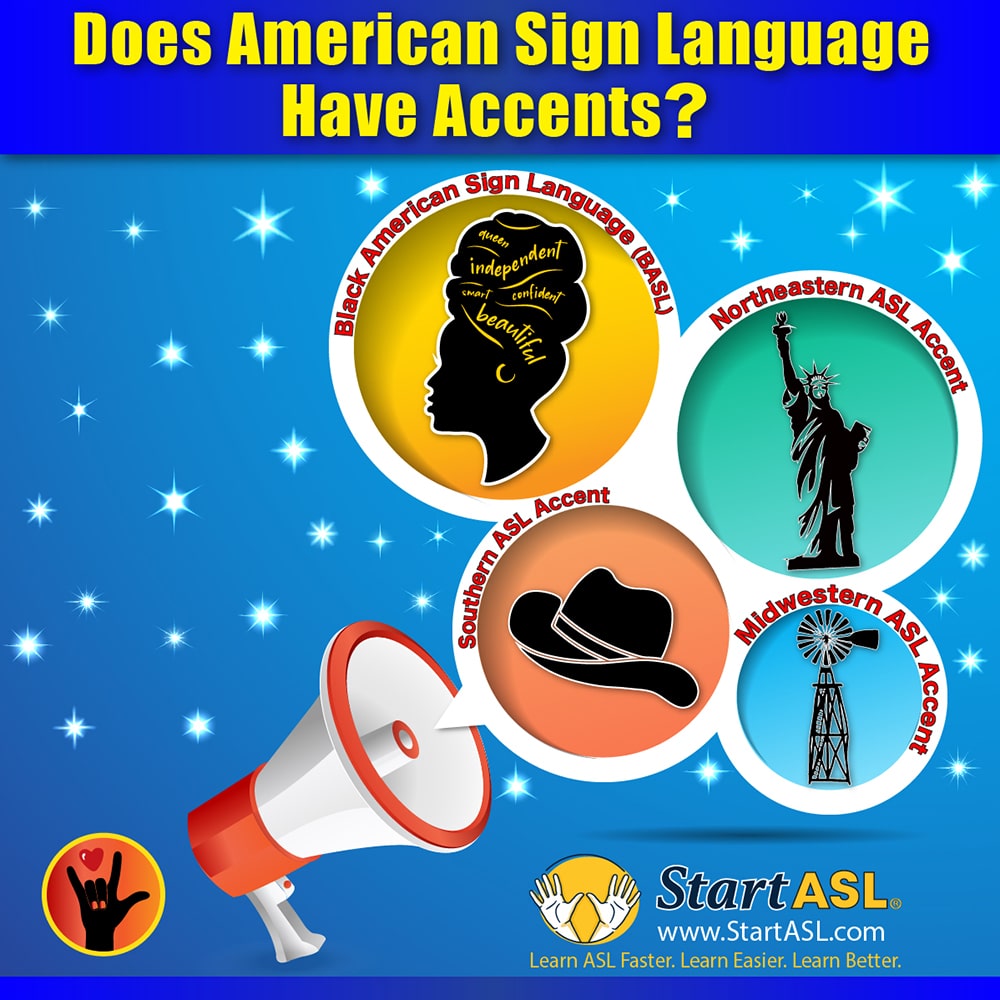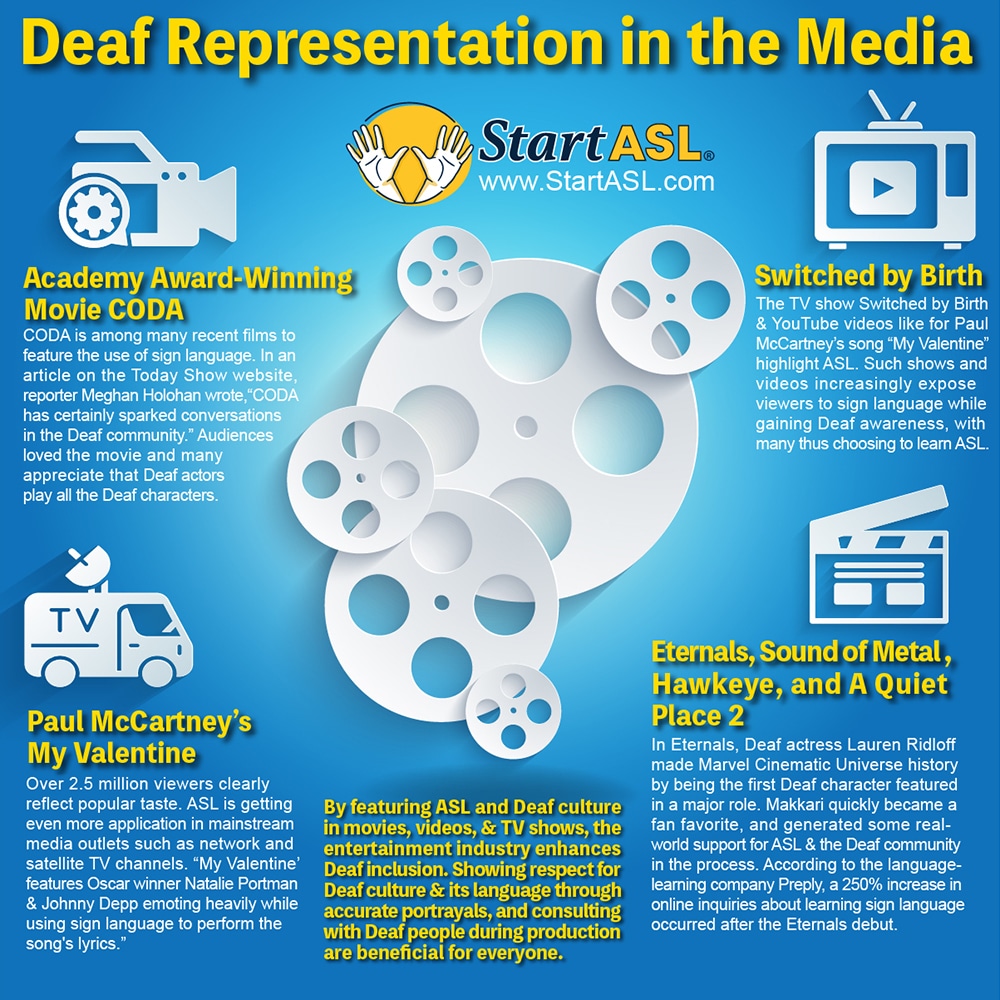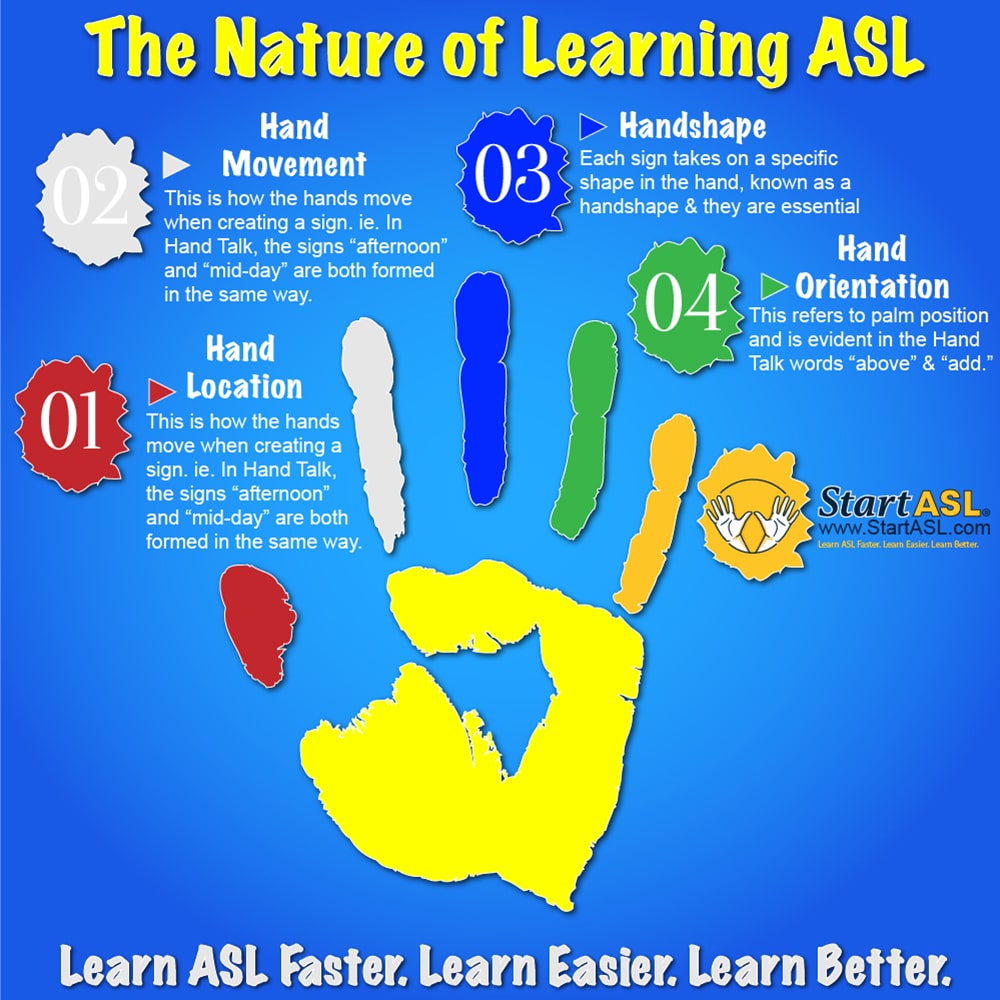
Does American Sign Language Have Accents?
- by Start ASL Social
- No Comments


American Sign Language has a rich history in the United States, Canada, and Mexico. Before Europeans arrived in North America, indigenous peoples created sign languages to interact with their Deaf and Hard of hearing (Deaf/HoH) members. In contrast, American Sign Language (ASL) traces its ancestry back to the 19th century in France. And like any spoken or signed language, ASL has progressed over time to reflect users’ cultural and regional differences.
Also, like spoken language users, sign language users have developed their own accents or styles of signing based on their training, age level, ethnicity, and whether they’re Deaf/HoH or hearing. Differences in the signs used to express the same word or message sometimes allow people to identify regional sign language styles.
What is American Sign Language?
American Sign Language is not a rendition of English. Instead, it’s a unique language that has its own pronunciation, word formations, grammar, sentence structures, and idioms. Like other natural languages, ASL has evolved spontaneously in humans through long use and repetition without conscious planning. It’s the principal sign language employed by Deaf and Hard of Hearing people in the United States and most of English-speaking Canada. ASL is a complete, structured visual language with both manual and non-manual features.
Definition of accent in the context of American Sign Language
Speakers of American Sign Language also have their accents or communication styles. And similar to all other languages, ASL is characterized by regional variations and shifts in tone. In sign language, an accent or style is detectable in how words are signed differently. It’s a lexical distinction, resembling how some US residents say “pop” while others say “soda” when referring to a soft drink.
The purposes of this article are to explain the following:
- the features of several accents or styles in American Sign Language
- the impact such accents or styles have on communication
- the challenges faced by ASL signers with different accents/styles
- the prospect of sign language standardization as a way to enhance communication.
To understand how ASL speakers develop different accents, it is necessary to understand the factors that produce accents. Accents emerge when an isolated set of users gradually embellish or exaggerate certain aspects of their language. This isolation doesn’t just relate to place. Age groups, ethnic groups, or others who are part of a subculture can develop an accent. Over time, their embellishments produce peculiarities that allow the users to recognize outsiders and outsiders to recognize them. This process is not deliberate but happens in all languages, including American Sign Language.
Regional and Cultural Variations of American Sign Language
People who use spoken languages have different accents or variations in how they speak based on where they’re from. Even within one country, people’s accents vary from region to region. For instance, in the US, people from New York have New York accents, and those from the South have Southern accents. Similarly, accents, also known as styles, occur in ASL.
An individual’s ASL accent or style is determined by their behaviors, expressions, gestures, phrases, speed of execution, and hand movements. ASL accents, as a whole, are influenced by users’ age level, physical condition, place of birth, culture, and use of slang and idioms. A proficient ASL user can often identify what location or culture a person is from based on how they sign.
Black American Sign Language (BASL)
For example, a cultural variation of ASL that’s easy to identify and common among Deaf/HoH African Americans is Black American Sign Language (BASL). This language evolved because US schools for the Deaf in the late 19th century did not accept Black students. So, BASL emerged from the Black culture to meet the students’ needs. It features Black idioms and slang along with traditional ASL components.
Regional ASL Styles or Accents
At the level of word meaning, the same signed gesture in ASL can denote different things in different parts of the United States. For example, in the western states, especially California, the B hand shape, with the palm held outward and shaken up and down, signifies the city of Berkeley. In contrast, this sign generally means the city of Boston in the eastern states.
Northeastern ASL Accents/Styles
New York – Much like their Hearing counterparts, Deaf/HoH ASL users from New York City sign quickly. New Yorkers are known for their fast-talking, brusque manner. Similarly, ASL users from New York sign faster and employ different body language and facial expressions than those from other areas of the US. They also use New York slang and are inclined to use more profanity!
Philadelphia – The Philadelphia area is home to some unusual signs due to the city’s long history of teaching Deaf/HoH people to communicate through speech and lip-reading. This has created a group of home-grown signs that have become part of that region’s ASL accent or style. After living in the city for a while, a proficient ASL user will be able to recognize a native Philadelphian based on their application of certain signs. These include the signs for truck, underwear, and the months of April and March.
Southern ASL Accent/Style
Unlike ASL users from the Northeast, those from the South are much more relaxed in their approach to signing. Southerners are known for their laid-back lifestyles and slower speech patterns. Likewise, Southern ASL users draw out their signs to imitate the famous Southern drawl. Southerners also touch their chests and the lower part of their faces more often when signing, and these gestures have become part of the South’s ASL accent or style.
Midwestern ASL Accent/Style
While signers from the Northeast are generally quick with their signing and Southerners are slow and meticulous, Midwesterners lie somewhere in the middle. For instance, American Sign Language users from Ohio tend to be calm and relaxed with their signing, not too fast or too slow.
The Impact of ASL Accents/Styles on Communication
Accents reflect people’s unique backgrounds, and many take pride in their accents and style. However, as with spoken English, having a distinct ASL accent may cause difficulties in communicating with other native users in work, educational, and social settings.
Ineffective communication caused by a strong accent in spoken language can produce barriers in business. It may also have adverse effects on educational progress and activities in daily life. Finally, it may adversely affect a person’s self-esteem. The same holds true for accents or styles in American Sign Language.
For these reasons, some ASL users learn how to modify or eliminate their accents to improve signed communication skills. Another method for addressing this problem is through standardization of ASL to help users communicate more effectively.
American Sign Language Standardization Can Improve Communication
The topic of sign language standardization has been approached from many angles. To some members of the Deaf/HoH community, however, standardization represents a form of interference by the hearing community. They view it as an attempt to “fill in gaps” by creating a universally accepted form of sign language that’s more consistent than the current hodgepodge of ASL accents/styles.
For this reason, some Deaf/HoH people resist dictionaries or glossaries intended to aid in teaching sign language. On the other hand, others in the community consider ways to standardize ASL with different, more inclusive motivations, such as recognizing the different varieties of the language and ways to deal with them.
In any case, a successful course of action for sign language standardization needs to include Deaf professionals as the leading decision-makers. In this way, both the Deaf/HoH and hearing communities can be assured that the standardizing process will be carried out by qualified individuals with sufficient knowledge and background to do the job right.
This view is supported by the Statement on Sign Language Work by the World Federation of the Deaf (WFD). The Statement stresses that sign language work, such as standardization, should be conducted under the guidance of Deaf native sign language users and WFD Ordinary members. Doing so may help ASL standardization to become more easily accepted by the Deaf/HoH and hearing communities alike.










